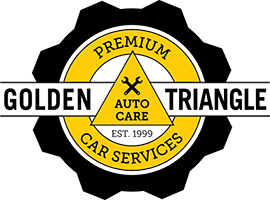
Call Us Now
303-573-1335

Today’s cars are more complex than ever. While you have hopefully found an expert and reliable mechanic, some maintenance items are best served by a combination of mechanic and driver attention and checkups. Take your tire inflation, for instance. Monthly checks are routinely recommended to insure proper inflation and resulting optimal safety…as well as optimal mileage.
What is the right pressure – especially when living at high elevation?
Manufacturer’s Suggested PSI (pounds per square inch) can be found on a sticker on the inside edge of your card door jam, on your trunk lid, in the console, on the fuel door or in your owner’s manual. Recommended pressure is usually between 30 and 35 PSI.
Significant changes in altitude affects tire pressures when traveling from one elevation to another. Fortunately, this influence is relatively small and can be easily accommodated. Those measured at the 5,000-foot level – such as here in Denver Colorado – where an atmospheric pressure of only 12.2 pounds per square inch is the ambient pressure would indicate about 2-3 psi higher than at sea level. On the other hand, traveling from a high altitude location to sea level would result in an apparent loss of pressure of about 2-3 psi.
Sounds simple enough, until you add in the relatively recent issue of nitrogen tire inflation. “To nitrate…or not to nitrate!” that is the question. First of all, even the commonly used “tire air” found in gas station dispensers are going to have some nitrogen; actually quite a bit: Typical tire air consists of approximately 78% nitrogen, 21% oxygen, and 1% miscellaneous gas.
You may have heard, however, that some experts recommend increasing the nitrogen percentage significantly – to at least 93-95% of the total gas. See below as we separate the Hype from the Helpful when it comes to nitrogen inflation:
- Reduced Leakage. Helpful! Probably the main benefit of nitrogen inflation is a reduction in leakage rate. You may be surprised to hear that ALL tires leak, even brand new ones. This is because the rubber in tires resembles a mass of spaghetti strings twisted together. Since tires are not truly ‘solid’ rubber, (very) small amounts of gas – of whatever type – regularly leak through the wall of the tire into the atmosphere. Estimates put the loss of pressure at around 1 pound per square inch (psi) per month of driving. (Reminder: Check your tire pressure once per month!)
Using a nitrogen-heavy gas mix can slow the rate of leakage for the simple reason that nitrogen molecules are larger than oxygen molecules. That’s right, nitrogen simply has a tougher time ‘fitting’ through the tiny gaps in that tangle of rubber spaghetti. By holding the desired inflation longer, nitrogen can help improve gas mileage, increase tire life, and maintain optimal handling.
While nitrogen can carry benefits, the question is, how much, if anything, did it cost you to achieve this ‘Nitrogen Nuance’? Some tire dealers might charge $5 per new tire to cover nitrogen inflation, with free reinflations for the life of the tire. One expert analysis deemed that charge a fair on; while a $10 charge, with charges for subsequent reinflations, is probably not worth it. Nitrogen rich inflation does require special equipment and some charge can be expected for this feature.
- Reduced Wheel Corrosion. Ehhh. While accurate, this benefit might not be such a fantastic feature of nitrogen inflation. Nitrogen is non-corrosive (it does not react with many materials) whereas oxygen is “fast reactive” – it interacts with many materials, breaking down these materials by ‘oxidation’. In other words, nitrogen decreases rust while oxygen enhances it. The result is minimized wheel corrosion and better bead sealing with nitrogen. However, for tires that are used routinely, the need for replacement of the tires themselves due to average tread wear will come far sooner than any effect of reduced corrosion comes into play.
- Temperature Effects. This one’s a wash. Both nitrogen and oxygen are affected by temperature changes and to approximately the same degree. Tire pressure changes approximately 1 psi for each 10-degree change in Fahrenheit. For both gases tire pressure drops in colder temperatures, and more frequent reinflation is required in the colder months.
If this all starts to sound like more than your tire gauge skills can handle, just come in and talk to your favorite techs at Golden Triangle Auto Care … we’ll check everything out and make sure your tires are at the perfect inflation level!
